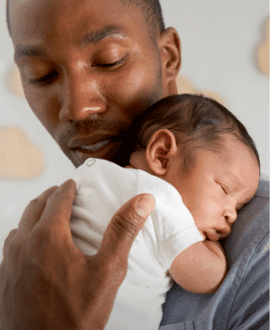A foster carer’s home must be an environment where children can develop and grow in a safe and healthy way. The accommodation must be warm, adequately furnished, decorated and maintained to a good level of hygiene.
It is important for the assessing social worker to clearly set out the standards that the Fostering Service expects from foster carers from the earliest stages of their initial assessment.
Thereafter it is a question of monitoring the maintenance of those standards (see our fostering home environment guidance for more information). It is not the expectation of Fostering Devon that foster carers maintain their home in ‘showroom condition’.
Foster carers are responsible for ensuring that their homes are safe and healthy environments for the children and young people they look after.
The home should be clean and free from hazards, appropriate to the expected ages of any children placed. Equally important is the need for the home to feel warm and to have a nurturing atmosphere.
This can be difficult to quantify but is something that most people can associate with. There should be no obvious health and safety issues.
A health and safety check will be completed prior to approval and revisited annually as part of the annual review process. Health and safety checks must be up-to-date and all recommendations carried out prior to children being placed.
A foster carer’s approval is at risk if at any stage they fail to meet the standards set out in this policy.
It is important for Fostering Devon to be notified of any shortfalls to enable an accurate and up-to-date risk assessment to be conducted. Such an assessment could put measures in place to reduce the risk.
Fostering Devon appreciates that there will be times when home improvements need to be undertaken. Any repairs or improvements must be undertaken in a way that does not compromise the child or young person’s safety and appropriate measures need to be in place for more major building works. Please seek guidance from your SSW.
If the accommodation has had significant repairs or improvements, an additional health and safety check will need to be undertaken.
The following minimum requirements must be met at the carer’s main home and any secondary residences:
- All homes used for fostering should be in a generally good state of repair, and be warm, welcoming and friendly.
- The environment should be where children are physically and emotionally safe promoting a healthy wellbeing.
- Age-appropriate books, games and toys should be available to children within the property.
- Bedrooms being used for fostering should have a window and a bedroom door and should not be a room connected to another room.
The number of children that the home can accommodate must take into consideration any existing household members, any likely changes to the household, for example, children returning from university, and the home’s overall ability to accommodate everyone.
This means not just looking at the number of bedrooms, but the size of communal areas of the house as well.
This should include the number of toilets, showers and bathrooms. It may even be as basic as asking if the dining table can seat all of the household members at the same time.
Children should live in foster homes which provide space to a suitable standard.
Department for Education, 2011
Bedroom sharing
Standard 10.6 of the National Minimum Standards Fostering states that ‘each child over the age of three should have their own bedroom.’ If this is not possible, the sharing of a bedroom is agreed by each child’s responsible authority and each child has their own area within the bedroom.
However, before an agreement is reached in regard to children over three sharing a bedroom a risk assessment must be undertaken by the SSW in consultation with the child(ren)’s social worker
Best practice is that Fostering Devon aims for all children over three to have their own bedroom. Before seeking agreement for the sharing of a bedroom, the Fostering Service will take into account:
- the individual or special needs of any child placed
- whether or not there is a history of bullying
- whether or not any of the children have been sexually abused or have exhibited any inappropriate sexualised behaviour
- the wishes and feelings of the children
There may be circumstances where, having assessed the risks, it is concluded that sharing a bedroom is the best way to promote the child’s welfare. For example, a child may have made clear that they would find it comforting to share a bedroom with their sibling.
This will be the exception rather than common practice. The decision-making process and outcome of the assessment must be recorded in writing where bedroom sharing is agreed.
If it is proposed that siblings are placed where bedroom sharing is necessary, the SSW should discuss it with the children’s social worker and foster carer before jointly completing a risk assessment using the Bedroom sharing assessment and arrangement form.
A copy of the completed form should be signed by the supervising social worker and team manager and stored on the foster carer’s and the child or young person’s Eclipse file.
Babies under six months
Babies can share a bedroom with foster carers until the age of six months. They should then be moved into the fostering bedroom.
Six months to three-year-olds
Depending on the size of the bedroom, a maximum of three related siblings (of either gender) can share a bedroom. Any child aged under six should not be placed on the top bunk if bunk beds are used.
Three to eight-year-olds
Children over the age of three should have their own bedroom, however, in exceptional circumstances and depending on the size of the bedroom, two siblings of the same gender can share a bedroom if related, subject to a Bedroom sharing assessment and arrangement and agreed by all parties.
A child aged six and over may use a top bunk bed.
Age eight and over
Best practice states that all children over the age of eight years would not be expected to share. Where they choose to share (subject to a risk assessed and agreed by all parties), there would need to be another bedroom available so that they are able to choose ‘not to share’ if they changed their minds.
In addition, children aged 11 plus should have sufficient space for study within their own bedroom.
In any circumstance, consideration will be given to the current and previous relationship between siblings and their own views and feelings. This is essential if there is any risk of bullying or sexualised behaviour.
General guidance regarding bedroom sharing
It is not best practice for foster carers’ own children to share a bedroom to allow space for fostering. Foster carers’ own children and children being looked after (of any age) should not share a bedroom.
Foster carers are only recruited if they are able to offer a dedicated spare bedroom. It is not acceptable for children who are being looked after to share a foster carer’s bedroom (with the exception of babies up to age six months).



